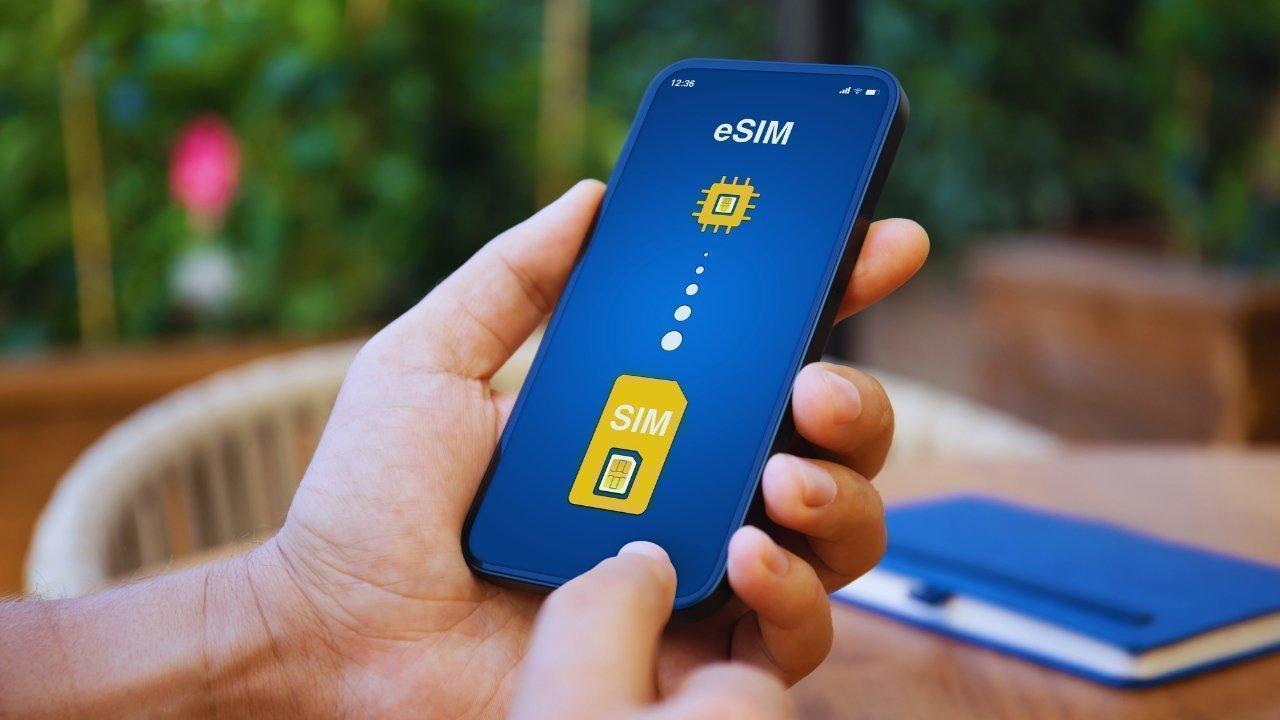
Join 10k+ people to get notified about new posts, news and tips.
Do not worry we don't spam!

Post by : Anis Farhan
Travel has always demanded reliable communication, whether for navigation, staying in touch with loved ones, or managing bookings. Traditionally, travelers relied on physical SIM cards or international roaming plans, often dealing with high costs, limited coverage, and logistical hassles. The arrival of eSIM technology is transforming this paradigm.
An eSIM, short for embedded SIM, is a digital SIM integrated directly into devices such as smartphones, tablets, or smartwatches. Unlike traditional SIMs, it does not require physical swapping, enabling travelers to activate local or international data plans digitally. This evolution simplifies connectivity, reduces costs, and offers unprecedented flexibility, especially for those moving across multiple destinations.
The adoption of eSIMs represents a significant shift in travel technology, affecting travelers, service providers, and even the traditional travel agency model. The convenience and adaptability offered by eSIMs are redefining how global travelers communicate, access services, and manage logistics while abroad.
At its core, an eSIM functions similarly to a conventional SIM but exists digitally within a device. The user can activate a carrier’s plan by scanning a QR code or entering an activation code, allowing immediate access to the network without inserting a physical card.
This technology is supported by most modern devices, including the latest iPhones, Android smartphones, tablets, and wearables. For travelers, the benefits go beyond convenience:
Instant Activation: Travelers can purchase and activate plans before departure, ensuring immediate connectivity upon arrival.
Multiple Profiles: Devices can store several eSIM profiles simultaneously, allowing seamless switching between networks or plans for different countries.
Security Enhancements: Digital activation reduces risks of physical SIM theft or loss, adding an extra layer of protection for mobile connectivity.
With these capabilities, eSIMs address many pain points associated with conventional travel connectivity methods.
One of the most compelling features of eSIMs is the ability to maintain continuous connectivity without physical SIM swapping. Travelers no longer need to locate a local SIM vendor or navigate language barriers to secure a network.
This instant access is particularly beneficial for business travelers, digital nomads, or anyone needing reliable communication for navigation, banking, or booking confirmations. In emergency scenarios, seamless connectivity can also be a lifesaver, allowing access to local services or assistance promptly.
International roaming plans are notorious for high fees and unexpected charges. eSIMs present a cost-efficient alternative by offering customizable data plans tailored to specific destinations and durations.
Travelers can choose plans based on expected usage, region, or travel length, avoiding overcharges. Some providers offer unlimited data plans starting from as low as £6, covering hundreds of global destinations. This flexibility makes eSIMs a practical solution for budget-conscious travelers who still require reliable internet access during trips.
Flexibility is another hallmark of eSIM technology. Multiple profiles can be stored on a single device, enabling travelers to switch between local carriers or regional plans without physical intervention. This is particularly advantageous for multi-country trips where different networks dominate.
Additionally, eSIMs allow travelers to pre-select or modify data plans on the go, ensuring they always have coverage that meets their needs without being tied to a single provider. This adaptability enhances both convenience and control over mobile expenses.
Traditional SIM cards are made of plastic and contribute to waste when discarded after a single use. eSIMs eliminate this need, aligning with sustainable travel initiatives. By reducing reliance on physical cards, eSIMs promote environmentally responsible travel practices while still ensuring connectivity for millions of travelers worldwide.
The rise of eSIMs is influencing the role of traditional travel agents. Historically, travel agencies assisted with securing international SIM cards or recommending roaming plans to clients. With eSIM technology, these agencies face both challenges and opportunities:
Service Enhancement: Agencies can incorporate eSIM plans into travel packages, offering clients immediate connectivity upon arrival.
Client Retention: By bundling eSIM options with flights, hotels, or tours, agencies increase customer satisfaction and loyalty.
Educational Role: Agencies can guide travelers on choosing suitable eSIM plans and providers, bridging the knowledge gap for less tech-savvy clients.
Rather than rendering agencies obsolete, eSIMs are transforming their role from SIM facilitators to comprehensive travel advisors integrating digital connectivity solutions.
Selecting an eSIM provider is crucial for ensuring reliable connectivity. Factors to consider include coverage, data limits, pricing, support, and compatibility with devices. Some popular options include:
Holafly: Known for unlimited data plans and global coverage, suitable for frequent international travelers.
Airalo: Offers flexible regional and global plans catering to diverse travel itineraries.
Saily: Focuses on secure connectivity with strong coverage in Asian and Oceania regions.
Travelers should compare plans, read reviews, and verify compatibility with their devices before purchase to ensure seamless connectivity during their trips.
The practical benefits of eSIMs extend across different traveler profiles:
Business Travelers: Access to continuous internet allows smooth communication with clients, remote work, and virtual meetings without downtime.
Digital Nomads: eSIMs enable frequent switches between countries and providers, supporting long-term travel while maintaining work continuity.
Tourists: Convenience of instant data access simplifies navigation, translation, and booking of experiences or transport.
Emergency Situations: In disasters or health emergencies abroad, eSIMs provide a reliable lifeline to local services or embassies.
These use cases highlight how eSIMs enhance both efficiency and safety, making them an indispensable tool for modern travelers.
eSIM adoption is expected to grow as more devices and carriers support the technology. Future developments may include:
Wider Device Compatibility: Integration into laptops, wearable tech, and IoT devices for connected travel experiences.
AI-Driven Plan Selection: Personalized recommendations based on usage patterns, destination, and travel duration.
Seamless Cross-Border Connectivity: Automated switching between local networks without manual activation.
Enhanced Security Protocols: Advanced encryption to protect personal and financial information during travel.
These advancements will further solidify eSIMs as the preferred connectivity solution for global travelers.
Despite its advantages, eSIM technology faces challenges:
Device Compatibility: Not all devices support eSIMs, limiting access for some travelers.
Provider Limitations: Coverage gaps exist in remote or less developed regions.
Awareness Gap: Some travelers remain unfamiliar with eSIM activation, plans, and benefits.
Security Concerns: While digital, eSIMs must ensure robust security against unauthorized access or hacking.
Overcoming these challenges requires collaboration between device manufacturers, network providers, and travel service companies to make adoption smoother and more reliable.
eSIM technology is transforming the travel experience by providing instant, flexible, and cost-effective connectivity. Its impact extends beyond convenience, influencing travel agency services, environmental considerations, and digital infrastructure.
As adoption grows and technology evolves, eSIMs may become the standard for global travelers seeking seamless connectivity. By embracing eSIMs, travelers can enjoy enhanced communication, flexibility across destinations, and a more efficient, connected journey.
For frequent travelers, business professionals, or even casual tourists, eSIMs represent a practical, modern solution that simplifies travel and enhances the overall experience.
This article provides information about eSIM technology and its applications for travelers. It does not endorse any specific provider or service. Travelers should conduct their own research and choose eSIM solutions that meet their specific needs.










Mitchell Marsh Backs Aggressive Plan Ahead of India T20 Series
Australia captain Mitchell Marsh says his team will continue playing fearless cricket as they prepar

Smriti Mandhana Becomes World’s No.1 ODI Batter
India’s Smriti Mandhana rises to No.1 in ICC Women’s ODI rankings with a career-best rating of 828 a

Suryakumar Yadav Focuses on Team Spirit and Fielding Goals
India captain Suryakumar Yadav stresses teamwork, energy, and stronger fielding efforts ahead of the

Sherwood Leads Canucks to Overtime Win Against Oilers
Kiefer Sherwood scored twice, including an overtime winner, as Vancouver Canucks defeated Edmonton O

Freeman Leads Dodgers to 6-5 Thriller Over Blue Jays
Freddie Freeman’s 18th-inning walk-off homer gives the Dodgers a thrilling 6-5 win over the Blue Jay

Bayern Target Another Victory in German Cup Match
Bayern Munich look to continue their perfect start to the season with a German Cup clash against Col